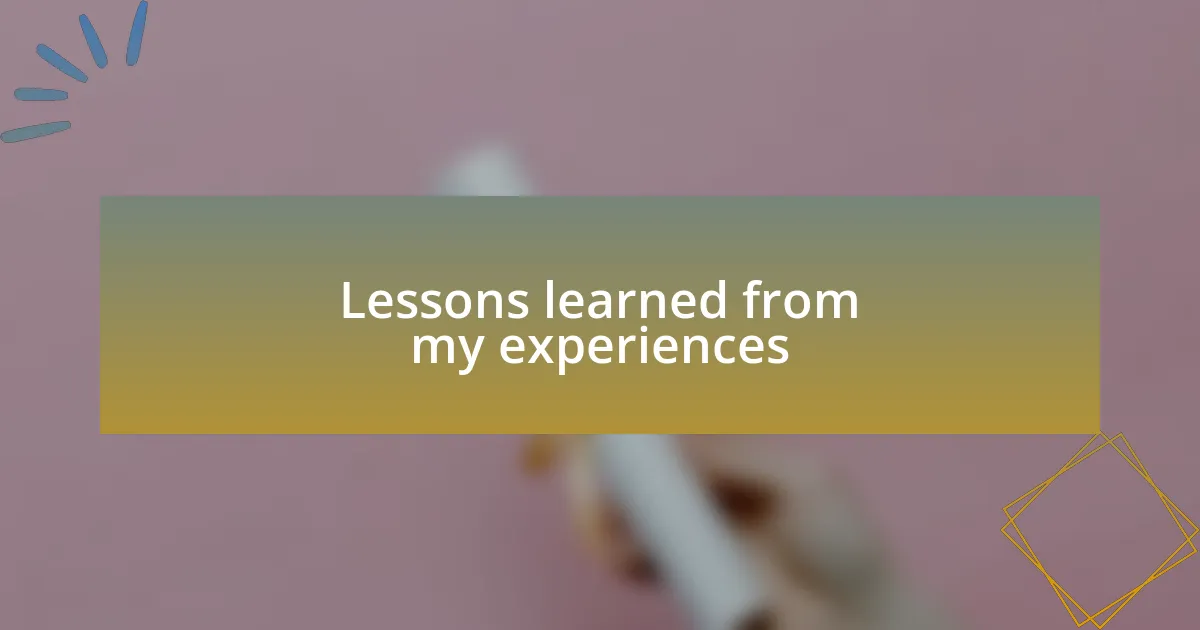Key takeaways:
- Brand positioning involves creating an emotional connection with the audience, emphasizing storytelling and engagement.
- Key elements include defining a target audience, differentiation, and maintaining consistency across platforms.
- Effective strategies for brand positioning include strategic storytelling, leveraging partnerships, and utilizing audience feedback for improvement.
- Challenges in brand positioning involve standing out in a saturated market, aligning brand perception with audience expectations, and maintaining consistent messaging.

Understanding brand positioning
Brand positioning is all about carving out a unique space in the minds of your audience. I remember how thrilling it was to see a brand I connected with at a music awards show. It made me realize that positioning involves creating an emotional bond with the audience, not just a marketing strategy. Have you ever felt a deep connection with a brand that aligns perfectly with your values or interests?
In my experience, successful brand positioning goes beyond just the product; it encompasses the overall experience. I was at a concert where the sponsor’s branding was so seamlessly integrated that it almost became part of the show. That made me wonder: How can brands create a narrative that resonates with fans on a personal level? It’s that blend of storytelling and audience engagement that really sets a brand apart.
I also learned that effective positioning requires continuous reflection and adaptation. I recall a time when my favorite music festival changed its branding. At first, I was skeptical, but they managed to engage me with a fresh vision that kept the core spirit alive. This taught me that brand positioning must evolve in response to shifting cultural landscapes. How has your perception of a brand changed over time? It’s a compelling reminder that being adaptable is key to maintaining relevance in the crowded music industry.

Key elements of brand positioning
Brand positioning hinges on defining a clear target audience. I recall attending a small music venue where the local band had such a distinct vibe that it attracted a specific crowd. Their ability to attract listeners who resonated with their unique sound and message made me appreciate the importance of knowing who you’re speaking to. Have you ever felt that a brand truly understands you as a customer? That connection is critical.
Another vital element is differentiation. I remember a brand that stood out during an awards night not just for their flashy ads but for their commitment to social causes. They partnered with local charities, which transformed their image from just a product to a purpose-driven movement. It made me think: how does a brand set itself apart in a saturated market? Differentiation is about creating a memorable identity that customers can latch onto, and it makes a profound impact.
Additionally, consistency across all platforms cannot be overlooked. I often reflect on a prominent music award show that maintains a cohesive theme each year. From their marketing materials to the event itself, everything feels unified. This consistency builds trust, as I know what to expect every time they showcase their brand. Can a brand be truly effective if its message wavers? I believe that without consistency, any brand risks losing its identity in the audience’s perception.

Strategies for effective brand positioning
Effective brand positioning hinges on strategic storytelling. I recall a time when I attended a music award show with an opening act that seamlessly combined live performance with powerful visuals. The narrative they wove throughout their set resonated not only with the audience but also strengthened the brand’s identity. Isn’t it fascinating how a well-told story can have the power to entrench a brand in our minds?
Another essential strategy is leveraging partnerships. At one award event, I noticed a sponsor collaborating with emerging artists from diverse backgrounds. This synergy not only expanded their reach but also cultivated a deeper connection with the audience. It got me thinking—how can brands capitalize on meaningful partnerships to enhance their positioning? When brands align with others that share their values, they create a stronger and more authentic presence in the marketplace.
Lastly, utilizing feedback for continuous improvement is crucial. I remember attending focus groups for a music awards brand seeking to refine their positioning. It was eye-opening to see how they actively listened to audience input and adapted their approach accordingly. I often wonder, how many brands truly value and respond to customer feedback? Embracing this strategy not only shows that a brand cares but also allows for a dynamic evolution that resonates with their audience over time.

My journey in brand positioning
Brand positioning has been a learning curve for me filled with moments of discovery. I remember the first time I attempted to define a brand identity for a music-related project I was passionate about. It felt like piecing together a puzzle; I had to consider everything from the audience’s tastes to the unique story that set us apart. Did I really understand what made us different?
As I progressed, I learned the importance of authenticity. During a branding workshop, I encountered several artists who struggled to convey their true selves in their branding. This made me reflect on the times I felt pressured to fit into trendy molds rather than express my genuine voice. How often do we sacrifice authenticity for the sake of being popular?
Through trial and error, I’ve also come to appreciate the power of clear messaging. I once created a marketing campaign that was heavily conceptual, but the feedback was a wake-up call—it was simply too convoluted. The experience taught me that simplicity and clarity in communication resonate much more with audiences. Isn’t it interesting how straightforward messages often make the most significant impact?

Challenges faced in brand positioning
Brand positioning isn’t without its hurdles, especially when it comes to differentiating in a saturated market. I remember when I was trying to carve out a niche for a music awards event. It was daunting to see an ocean of competitors all vying for attention. How could we ensure our brand stood out? It often felt like shouting into a void, unsure if anyone was even listening.
Another significant challenge I’ve faced is aligning brand perception with audience expectations. I recall a specific incident where I launched a campaign based on what I thought the audience would love. However, the response was lukewarm at best. I was left questioning, did I truly understand my audience’s desires, or was I projecting my preferences instead? The experience led me to realize that genuine connections with the audience play a pivotal role in successful brand positioning.
Lastly, maintaining consistency across various platforms can be a real juggling act. At one point, I promoted a music award show with slightly varied messaging on social media, which led to confusion among followers. This inconsistency made me rethink how vital it is to have a unified brand voice. Do you ever feel like your message gets diluted in the noise of multiple channels? I know I have, and it’s a lesson that reshaped my approach to communication in branding.

Lessons learned from my experiences
One of the most profound lessons I’ve learned through my experiences is the importance of deep audience research. I once assumed a catchy tagline would automatically resonate, but it didn’t. I realized that, without truly understanding the emotions and values of the audience, even the best ideas can fall flat. Have you ever poured your heart into something only to watch it miss the mark? I certainly have, and it sparked a commitment to listening more than I speak when it comes to branding.
Another critical insight revolves around adaptability. I remember a moment during a campaign when our messaging needed to pivot due to unexpected market shifts. It was a nerve-wracking experience, but it taught me that flexibility is essential in brand positioning. Sticking to a rigid plan can sometimes mean missing opportunities for genuine engagement. How often do we cling to our initial ideas, only to realize that the landscape has changed? That moment of adaptation allowed us to connect in ways we hadn’t originally planned.
Lastly, collaboration has been invaluable in my journey. Working with artists and influencers helped me see brand positioning from diverse perspectives. There was a time when I thought I had to do it all alone, but involving others brought fresh ideas and authenticity to our campaigns. Isn’t it amazing how a different viewpoint can illuminate aspects we might have overlooked? Embracing collaboration not only enriched the brand but also fostered a sense of community, which is at the heart of any successful music event.